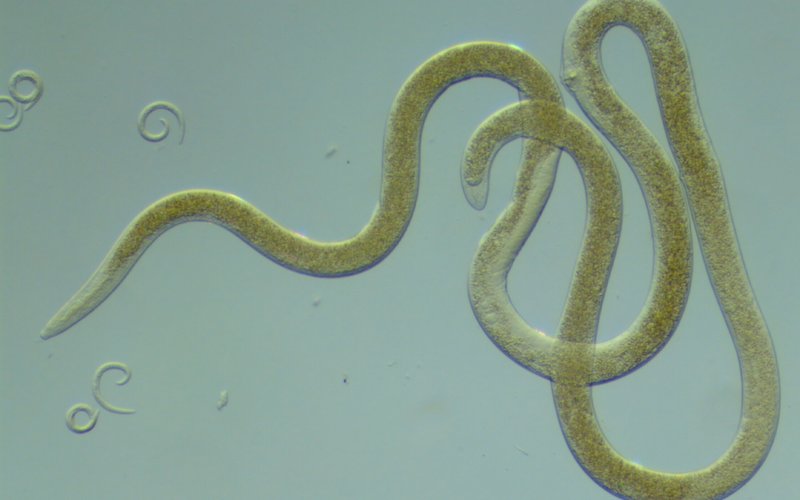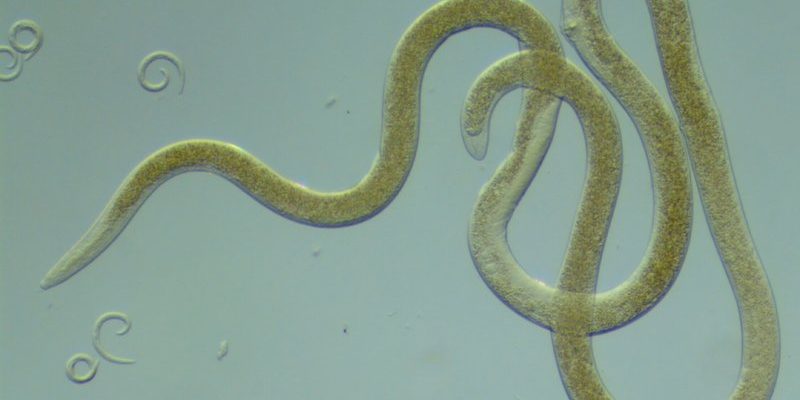
In this blog, we’re diving into what threatens roundworm populations. From natural predators like birds and fungi to environmental changes caused by human activities, it’s a fascinating, albeit concerning, look at how these little creatures struggle to survive. So grab that coffee, sit back, and let’s explore the vulnerabilities of roundworms in their natural habitats.
Understanding the Role of Roundworms in Ecosystems
Roundworms, or nematodes, are tiny yet mighty organisms that can be found in nearly every ecosystem on Earth. They often live in soil, freshwater, and marine environments, contributing significantly to nutrient cycling. These little guys help break down organic matter, releasing essential nutrients back into the soil. Without them, our ecosystems could struggle to thrive.
They’re also a crucial food source for many animals. Think of roundworms as the unsung heroes of many food webs. Birds, insects, and even larger mammals rely on them for nourishment. In this way, they not only support soil health but also contribute to the diets of numerous predators. It’s a perfect example of how interconnected our natural world is—when one species thrives, many others benefit.
However, despite their importance, roundworms face various threats that can disrupt their populations and, in turn, affect entire ecosystems. This brings us to the next big question: What exactly preys on roundworms?
Natural Predators of Roundworms
Roundworms have their fair share of natural predators. Among the most noteworthy are birds, predatory nematodes, and even fungi. Each of these predators plays a different role in their lifecycle, creating a complex interplay of survival.
Birds, such as robins and sparrows, hunt roundworms from the soil. They often scratch the surface, digging up their wriggly snacks. This predation can significantly reduce roundworm populations, especially in areas where birds are abundant. The decline of roundworms may lead to less nutrient recycling in the soil, affecting plant growth.
On the other hand, predatory nematodes target their fellow roundworms with deadly precision. These predators may release enzymes to break down roundworm tissues before consuming them. It’s like an internal struggle; in a world filled with inhabitants, even the smallest have to fend for themselves. Without a balance of these predator-prey relationships, the ecosystem could go out of whack.
Let’s not forget about fungi either. Certain fungi can parasitize roundworms, effectively using them as hosts. The fungi invade and consume the roundworm, reproducing in the process. This relationship, though deadly for the roundworm, helps maintain the equilibrium in the ecosystem.
Climate Change and Its Impact on Roundworm Populations
Climate change is another significant threat to roundworm populations. As global temperatures rise, it alters their habitats in ways we may not immediately notice. Changes in soil moisture, temperature fluctuations, and extreme weather patterns can all affect the survival of roundworms.
For instance, many roundworms thrive in moist, cool environments. However, with rising temperatures and extended periods of drought, these habitats dry up. When soil becomes too dry, roundworms can desiccate, leading to population declines. In essence, it’s like taking away their home and leaving them vulnerable.
Moreover, climate change can disrupt plant growth, affecting the organic matter available for roundworms. Since roundworms rely on decomposing organic materials, a decline in plant life can create a vicious cycle. Fewer plants mean less food, which means fewer roundworms. It’s alarming to think how interconnected every element is within an ecosystem.
In addition, the changing climate can lead to the proliferation of pathogens and parasites that further threaten roundworm populations. As temperatures and weather patterns shift, new challenges arise for these tiny creatures.
Soil Pollution and Its Effects on Roundworms
Soil pollution is another critical environmental threat to roundworms. Agricultural practices, such as excessive use of pesticides and fertilizers, can have dire consequences on roundworm populations. These chemicals can disrupt their physiology and reproductive cycles, leading to significant reductions in their numbers.
Consider this: when pesticides poison the soil, they not only affect the intended pest but also indiscriminately impact beneficial organisms. Roundworms, which play a vital role in the ecosystem, can be caught in the crossfire. This is like using a hammer to kill a fly – it’s overkill with disastrous results.
Fertilizer runoff can also lead to nutrient imbalances in the soil, creating conditions that are less hospitable for roundworms. If the soil becomes too acidic or too alkaline, it can affect the survival of these organisms. It’s a fine balance, and once disrupted, it can take time for ecosystems to recover.
To protect roundworm populations, promoting sustainable farming practices is essential. Reducing pesticide and fertilizer use and adopting organic farming methods can help create a healthier environment for these crucial soil inhabitants.
Conservation Efforts for Roundworm Populations
Given the various threats to roundworm populations, conservation efforts are becoming increasingly important. One way to help is by promoting biodiversity in ecosystems. Increasing plant diversity can provide a better habitat for roundworms, ensuring they have enough organic matter to thrive.
Restoring habitats damaged by pollution or climate change is also crucial. This could mean reviving wetlands, which are rich in biodiversity and serve as a haven for many organisms, including roundworms. When we protect these habitats, we’re not just saving one species—we’re supporting whole ecosystems.
Moreover, raising awareness about the importance of roundworms can help encourage more sustainable practices in both agriculture and land management. By understanding how essential they are, we can advocate for methods that protect and nurture their populations.
Here’s the thing: Our actions today can significantly influence the survival of roundworms and many other species. By promoting healthy ecosystems, we’re not just helping roundworms; we’re creating a more balanced and thriving environment for all living organisms.
Roundworms may be small, but they have a big impact on our ecosystems. They contribute to soil health, serve as food for numerous predators, and play a vital role in nutrient cycling. However, they face significant threats from both natural predators and environmental changes, including climate change and pollution.
By understanding these challenges, we can take steps to protect these vital organisms. This means adopting sustainable farming practices, restoring habitats, and advocating for biodiversity. Every action counts, and together, we can create a healthier environment for roundworms and all the organisms that rely on them. So next time you think about the little creatures in the soil, remember they’re more important than they might appear.

